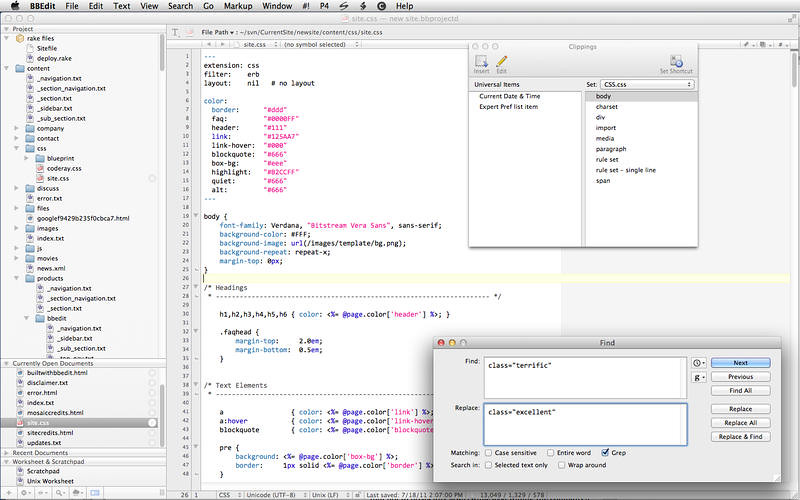
- Mac open bbedit from terminal software#
- Mac open bbedit from terminal code#
- Mac open bbedit from terminal mac#
I’ve always missed its design since leaving it behind, though. I was a Coda user for a while but outgrew its capabilities when I moved more into back-end programming and as my remaining front-end requirements grew more complicated. If you have fairly narrow website development needs, then you may be able to live in the beautiful Mac-first world of BBEdit or Panic’s old Coda. If you develop specifically for Apple’s platforms, then you can - and probably must, for better or worse - use Apple’s Xcode.
Mac open bbedit from terminal software#
Software development is a wide-ranging field, so there are certainly some niches where Mac-like editors can be found.
Mac open bbedit from terminal mac#
If you’re a software engineer with Mac design sensibilities, you’re probably going to have to compromise.

They just aren’t Mac-like, and for a very long time, that has been the sad state of affairs. They all accomplish incredible things and are vital tools in the software engineering ecosystem.
Mac open bbedit from terminal code#
That’s not to say that these code editors are bad. All of this is as far from Mac-like as you can get, though, and that truth is reflected throughout the rest of these apps’ interfaces. At least there are actual buttons, so I guess that puts VS Code at the high end for code editor preferences. This list is huge, with hundreds of settings all stacked together and a sidebar to help aid navigation. VS Code - widely considered as one of the best code editors around right now - offers this JSON preferences approach, but by default, uses a strange screen that opens as a tab in the text editor despite actually being a list of settings. Visual Studio Code’s ‘Preferences’ menu bar item. You then manually edit the text to adjust options. If that doesn’t already offend Mac users, a common theme in those settings screens is for them to be literal JSON text files that open in the editor. For many of them, the ‘Preferences’ menu bar item is actually a submenu from which you can navigate to ‘Settings,’ as well as other more nebulous options. You can see a microcosm of this fact just by looking at the preferences of these apps. They’re all clearly cross-platform apps with design senses that differ significantly from those of Mac-first developers. One of my main frustrations with pretty much all of the popular code editors out there (and I’ve tried most of them, including Visual Studio Code, Sublime Text, Atom, IntelliJ, and Eclipse) is that none of them are Mac-assed Mac apps. The code editor is the main tool of my trade, and I want to be using the best one that I can. I spend hours in it nearly every day and often keep going deep into the night. My code editor is the app I use more than any other.

Each one I’ve tried has annoyed me in various ways, and eventually, I find myself looking elsewhere. I’ve been writing code for nearly a decade, and throughout all of that time, I’ve never quite been satisfied with a code editor.


 0 kommentar(er)
0 kommentar(er)
